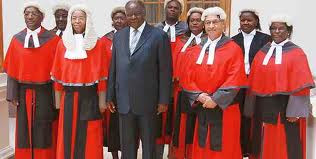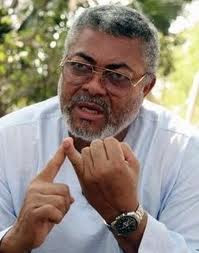The video footage shows an unnamed patient groaning in pain as he lay sprawled on a bare bed in the crowded Juba Hospital ward. His left leg and shoulder are swathed in white bandages through which blotches of fresh blood seeps from the underlying wounds.
Like all the other patients in this ward the injured man is a victim of the recent upsurge of tribal violence in the neighbouring state of Jonglei.
“They came at dawn and opened fire randomly on the fleeing people, killing women, children and the elderly then they burned the houses,” Yien Tap, another patient with less severe wounds explains. “Even those who fled were followed in the bush. We survived by hiding”.
The 25 year-old is lucky to be alive after a gang of Murle warriors descended on his village, killing more than fifty people and abducting many more as they drove away thousands of cattle.
The attack he is talking about is part of a series of raids that have defined the ongoing tribal conflict in Jonglei pitting the dominant Lou Nuer against the Murle. Reportedly fueled by quest for pasturelands, cattle rustling, overpriced dowry demands, local politics and ethnic animosity the clashes have already claimed thousands of lives according to some officials and left many more wallowing in internally displaced peoples’ camps.
The chaos came to a peak in January when more than 6000 armed Nuer tribesmen, called White Army, marched through Murleland in a scotched-earth operation that left in its wake a trail of blood, burned villages and thousands of homeless people. Vowing “to wipe out the entire Murle tribe from the face of the earth as the only solution to guarantee long-term security of Nuer’s cattle” according to a Juba-based blogger, the gun-wielding multitude climaxed its murderous march in the town of Pibor, where unconfirmed number of civilians were brutally butchered.
Pibor County Commissioner Joshua Konyi claimed that the invasion left more than 3000 people dead but UN and GoSS officials said the figures were unconfirmed and may be inflated. Aid agencies says more than 60,000 are in urgent need of help after being rendered homeless in a region where UN and government centers are far and wide between miles of bandit-infested barren wilderness.
The 800-strong combined force of UN and government soldiers holed up in the dusty town could nothing more than warning residents to flee their homes. Inaccessibility of this state which is the size of Bangladesh, late deployment of troops from Juba and reluctance to intervene in a historical tribal conflict have been cited as the reasons why authorities were unable to stop the advance of the deadly column.
The Nuer were revenging against a spate of attacks waged against their villages by their Murle rivals late last year where dozens of people, mostly women and children, were killed or abducted. Nuer Youth in Diaspora (NYD), a group claiming to represent members of the community abroad, endorsed the revenge attacks claiming it was a justified act of self-defense.
“It should be recalled that the right of self-defense, which includes preemptive attack strike, is a right that could also be exercised by communities in absence of a functional government that guarantees security,” the NYD said in a statement to the South Sudan News Agency (SSNA). “Unfortunately, a functional government does not exist in South Sudan and different tribes in the South live in Hobbesian anarchy in which men live without a common power to keep them safe”.
The Lou Nuer blames their woes on the government of President Salvar Kiir which conducted a disarmament operation against them in 2006, in which more than 300 are said to have died, and failing to do the same to the Murle who have since then have been taking the advantage to mount cattle raids and children abductions.
“The Nuer community in USA, Canada, Europe, New Zealand and Australia must raise funds for the White Army to defend properties and cattle of Nuer civilians,” the NYD resolved. “The money shall be used to purchase firearms and ammunition from Ethiopia…the Nuer and Dinka youth must raise a force of 50,000 White Army to fully protect their properties and villages”.
These sentiments were backed by the of Historical Society Association, a group that oversees the community’s religious heritage, whose chairman declared the Murle have committed a sacrilege by attacking the holy city of Wec Deang. The shrine is the birthplace of Prophet Ngundeng, a religious legend of the Lou Nuer people. Stories are told of how the holy man killed British soldiers with a swipe of his divine rod when they tried to attack the holy place in 1902.
“They first attacked Dengjok Payam and killed over 30 civilians and took over 20,00 heads of cattle …on January 14, 2012, the Murle fighters attacked Prophet Ngundeng’s Bieh (Pyramid) and killed innocent civilians,” complained the Society’s chairman and the prophet’s grandson Gai Ngundeng. “All Nuer officials, politicians, students, soldiers, youth, doctors, lawyers and White Army have to fight Murle youth and to bring them to justice for attacking the holy city of Wech Deang”.
Media and aid agencies reports indicates that the animosity between the two tribes is so fierce that even in Juba Hospital where most of the injured are nursing their wounds, the Nuer are housed in different wards from the Murle with police officers placed at the door to take care of any eventualities. According to United Nations Mission in South Sudan (UNMISS), the conflict has displaced more than 50,000 people, a situation aggravated further by the fact that recent fighting in the main Sudan’s Southern Kordofan and Blue Nile states has pushed 75,000 Sudanese refugees to cross over into South Sudan’s Unity and Upper Nile states.
With UN-backed peace talks having collapsed last December, there are no signs of lasting peace in the foreseeable future.
But the Nuer-Murle conflict is just one of the numerous internal feuds that are currently afflicting the infant state that declared independence barely six months ago. Throughout the history of the region, conflicts have been the norm rather than the odd. From wars pitting tribes fighting for pasturelands to Africans fighting against Arab domination, South Sudan is one of the continent’s oldest battlefields.
Although the formation of South Sudan Liberation Army (SPLA) in 1983 created a unified front through which a consisted war of independence from the north was waged, the movement also experienced breakups and revolts throughout the 22 year-old
civil war.
But the peculiarity of this conflict scenario is the fact that many rebel groups and armed militia have emerged and flourished after the signing of the Comprehensive Peace Agreement (CPA) in 2005 and the 2010 general elections, key milestones in the realization of freedom that have claimed millions of lives in the last 50 years.
The SPLM has pointed fingers at Khartoum but many observers tends to differ, accusing the movement of planting the seeds of discord through failure to deliver its pre-independence promises like provision of services, creation of employment and particularly the inability to address negative ethnicity.
“Minority tribes who joined the SPLA in their thousands found themselves left out in the movement’s leadership and participated only as cannon porters and nothing else,” complains an anonymous writer to the SSNA who goes on to claim the root cause of current tribal hostilities has been abated by the current regime. “It took Col. John Garang and his henchmen nearly three years to create fictitious titles like the one known as “Alternate Members” of Politico Military High Command to accommodate few non-Dinka like Galario Ornyang, James Wani Igga… and Dr. Riek Machar in the SPLA leadership’s hierarchy”.
With his name withheld by SSNA for “security reasons”, this author launches a scathing attack on the SPLM government which he blames for the high number of rebel movements that have been popping up in every corner of the new country in recent times.
“The Political Bureau (PB) which is the highest political organ of the ruling SPLM is actually a rubber stamp used by one ethnic group (Dinka) to dominate others by using their numbers to impose decisions on others,” he alleges. “There is no fairness in it… Even the so-called “deputies” used to wonder when decisions are passed and announced publicly. This is also applied to the Council of Ministers which is being chaired by H.E President Salvar Kiir himself”.
The discontent stirred by the apparent dissatisfaction with the Juba-based administration has led to the emergence of several rebel groups in recent times, the most prominent being South Sudan Democratic Army (SSDA) and South Sudan Liberation Army (SSLA), who are said to be in the process of forging a united fighting alliance. The two group’s newfound friendship is said to have bee triggered by the killing of SSDA leader Gen. George Athor Deng in December by the government forces along the Uganda-South Sudan border.
The 49 year-old Athor was a former member of the SPLA high command who revolted after losing the race for Jonglei governorship during the 2010 general elections.
“Another Athor will emerge tomorrow unless real progress is made in providing political and economic opportunities that feel marginalized in the process of independence,” explained John Prendergast, co-founder of the Enough Project that operates in South Sudan. “The South Sudan government, with international support, must address inter-communal divisions within the South”.
Achievement of development and service provision remains a tall order for the SPLM government partly because of the unresolved oil revenue sharing formula with Khartoum. The South Sudan government recently claimed that the north has stolen more than two million barrels of her oil worth $200 million.
Although the secession handed more than three quarters of the oil reserves to South Sudan, the country has no refinery or export infrastructure to exploit this important natural resource hence it relies heavily on the north to exploit this vital resource. This has been a source of numerous wrangles with Juba accusing Hassan al-Bashir government of hiding some of the oil revenue and President Salvar Kiir waening it might lead to a full-scale war.
Another big pebble in the SPLM shoe is Lam Akol, who led a breakup from the movement in 1991 in conjunction with Dr. Riek Machar, and his Shilluk tribe that hails from the Upper Nile state. Although after the early nineties rebellion Akol came back to the ruling party where he was appointed minister of foreign affairs after the signing of the CPA IN 2005, he reneged again to form the SPLM-Democratic Change through which he vied against Salvar Kiir in the last general elections.
However, violence erupted between the SPLM and the Shilluk when the ruling party refused to accept the victory of four SPLM-DC parliamentary candidates from the community in 2010 general elections. Under the command of a former prison warder called Captain Olonyi, the community has been conducting a series of raids and banditry incidents against government troops stationed in the Nile region.
Human rights groups have cited incidents of summary executions, rape, destruction of property and looting all of which have been denied by the national army. These incidences coupled with traditional Dinka-Shilluk land disputes make the Upper Nile regions one of the most volatile in South Sudan.
Other militia and rebel leaders that remains a huge thorn in the SPLM regime includes Gatluak Gai, Gabriel Tang Gatwich Chan who is reportedly under house arrest in Juba, Bapiny Monituel, Paulino Monitiep and Gordon Kong.
















